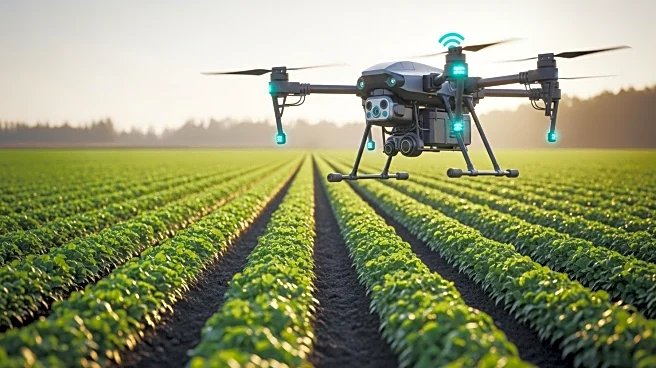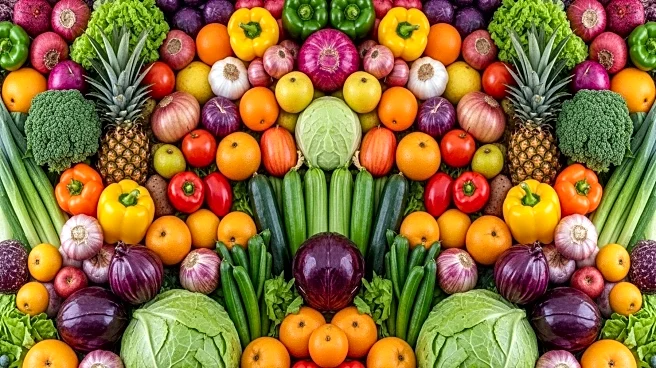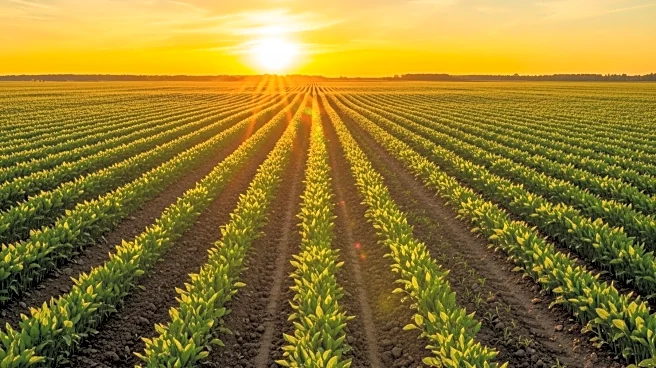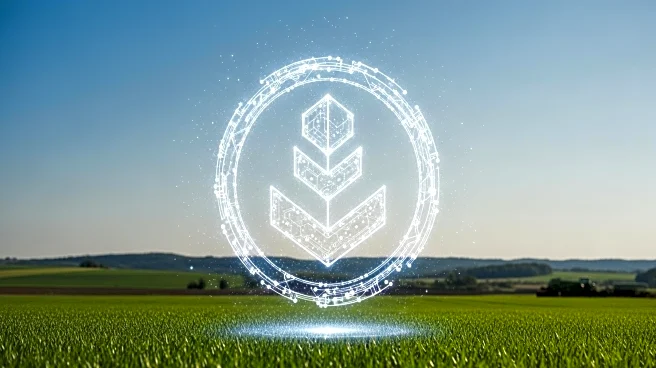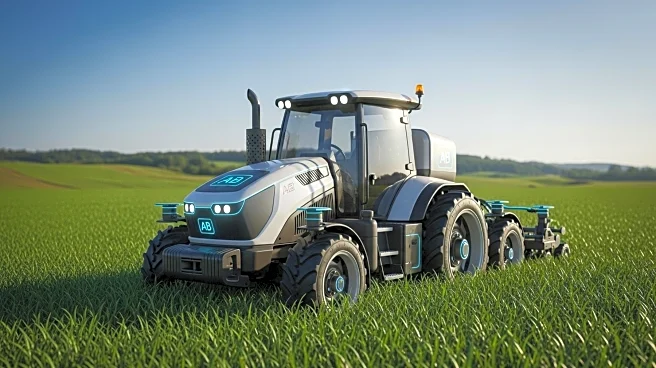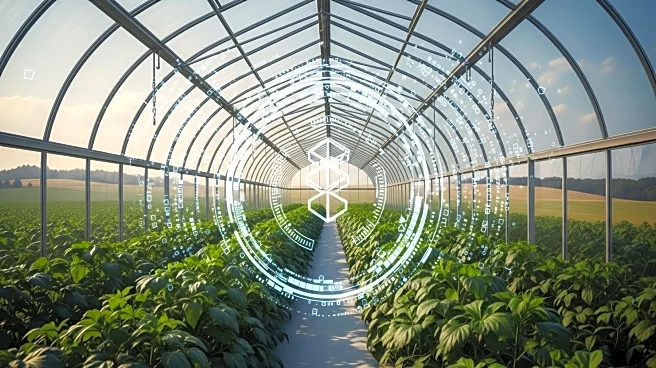What's Happening?
The U.S. precision farming market is anticipated to grow significantly, reaching approximately USD 4.54 billion by 2030, according to DataM Intelligence. This growth is driven by the increasing adoption of Internet of Things (IoT) technologies and advanced analytics, which are transforming traditional farming practices into data-driven operations. Precision agriculture aims to optimize labor, time, and input resources, thereby enhancing yields, reducing costs, and ensuring environmental compliance. Key technologies such as GPS, GIS, sensors, and drones are central to this transformation, providing real-time insights and operational efficiency. The Northeast region of the U.S. is leading in adoption rates due to its modern infrastructure and large-scale farm operations, although technological acceptance is spreading nationwide.
Why It's Important?
The expansion of precision farming in the U.S. holds significant implications for the agricultural sector, promising increased productivity and sustainability. By leveraging IoT and analytics, farmers can make informed decisions that enhance crop yields and reduce resource wastage. This technological shift is crucial for meeting the growing demand for food while maintaining environmental standards. The integration of satellite connectivity, particularly through partnerships like Deere & Company's collaboration with SpaceX, is expected to improve rural access to precision farming tools, thereby democratizing technology benefits across diverse farming communities. As the market grows, stakeholders including technology providers, farmers, and policymakers stand to benefit from improved agricultural outputs and economic gains.
What's Next?
The precision farming market is poised for further advancements, with AI-driven forecasting and increased drone applications expected to play pivotal roles. The expansion of satellite-based connectivity will continue to enhance rural adoption, bridging technological gaps in remote areas. As the market evolves, stakeholders will likely focus on overcoming challenges such as high capital investment and limited skilled labor, which currently hinder rapid penetration. Continued innovation and strategic partnerships are anticipated to drive the market forward, potentially reshaping the agricultural landscape into a more efficient and sustainable industry.
Beyond the Headlines
The rise of precision farming also raises ethical and cultural considerations, particularly regarding the balance between technological advancement and traditional farming practices. As automation and data-driven methods become more prevalent, there may be concerns about the displacement of labor and the preservation of farming heritage. Additionally, the reliance on technology necessitates robust cybersecurity measures to protect sensitive agricultural data from potential breaches.
